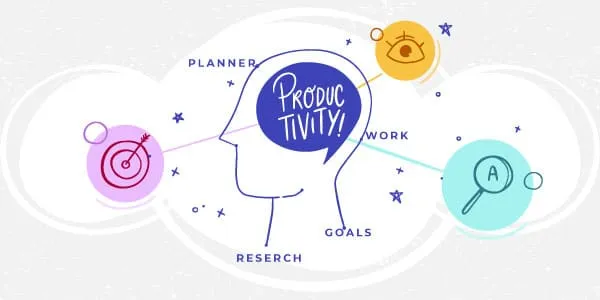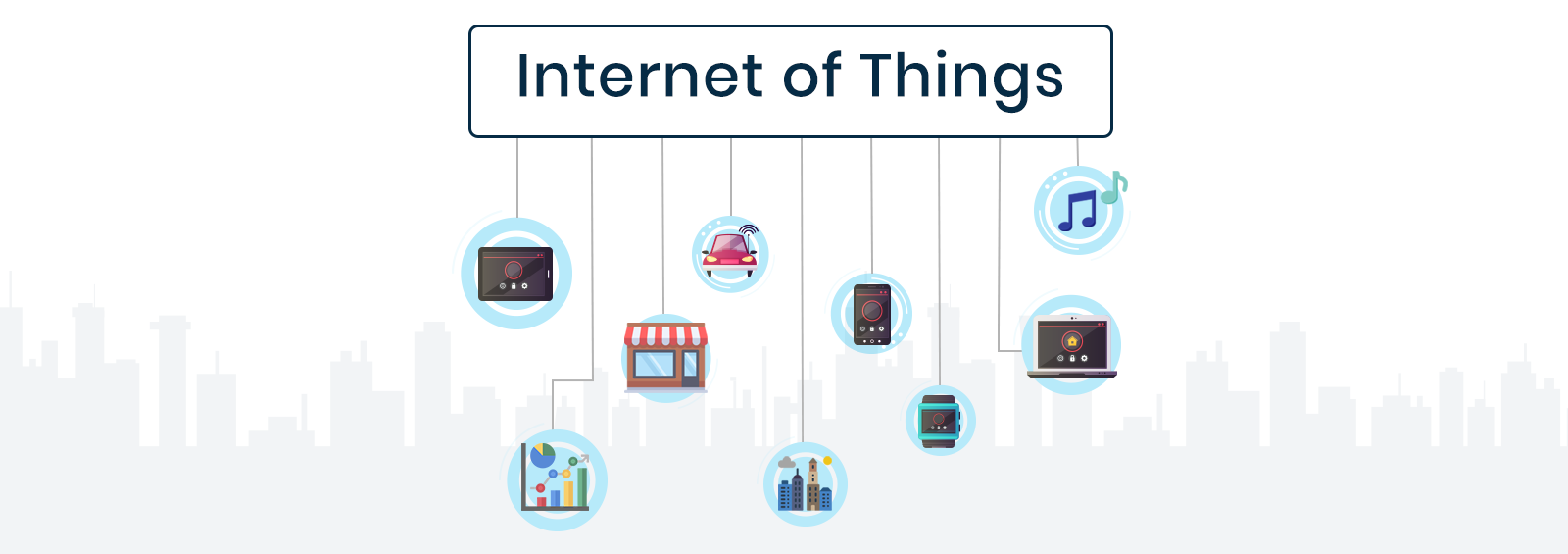
Coronavirus has continued to change how everyone lives their lives day-to-day. The service industry has been decimated and the newest unemployment claims have reached 6 million. Needless to say, right now pretty much everyone’s life has been turned upside down the last month or so.
Luckily, many business owners, entrepreneurs, and IT professionals like software developers are able to continue working throughout the current pandemic. Sure, some IT professionals are working remotely, but for the others that are just now starting, this predicament may seem like an entirely different world.
If you are able to still work from home, you still need to be productive. After all, what good is it if you are able to work if you can’t get anything done?
In this comprehensive guide, I want to show you how you can still have the same productivity that you are used to at the office — or maybe even more. But first, let’s talk about why working at home can be difficult.
Pain Points of Working from Home
Working from home may sound like a dream for some — no need for watercooler talk or constant disruptions from coworkers trying to “just ask one quick question.” But working from home has its own problems. Let’s take a look.
#1 Communication Problems
IT professionals, specifically software developers, are probably already used to working with a distributed team across different time zones, but some of you may not have had the chance to experience the unique “challenges” from working across different time zones. It may sound trivial, but making sure everyone knows when to do things is extremely important.
#2 Decreased Staff Morale
With this pandemic, even the biggest homebodies are beginning to become stir crazy. And that can affect how team members work with one another. Right now, we don’t know when all of this is going to end, so for many, it can seem like there is no end in sight. This, of course, can make even the best performers lose morale.
#3 Decreased Productivity
Remote developers and business owners that are used to working at home may find that working from home makes them even more productive. That’s great for them, but some people just can’t get the same amount of work done at home. And that reduced productivity can really cause a strain on your business.
Working from Home Productivity Hacks and Tools

Those are just some of the biggest problems that IT pros and business owners new to the working from home lifestyle can have. Luckily, there are solutions to many of these problems.
#1 Optimize your Home Workspace
At the office, you most likely have a dedicated workspace. Your brain knows that when you sit down at that place, it’s “work time.” But when you don’t have an area like this at home, it may be very difficult to get into that working mindset. Many software developers with lots of experience working from home can tell you that it was one of the biggest problems when starting out.
So, how do we take care of this problem?
#2 Set up a Dedicated Work Area
If you have a home office, you absolutely need to use that for your work. Many people that haven’t worked from home before just can’t wrap their heads around doing work at home on the computer. So, if you’re living with others, they might try to bug you. You should consider having a house rule such as “when the office door is closed, I am not available.”
Depending on how much you use your dedicated space, you may be able to write that off as a work expense on your taxes. Make sure to ask your accountant about this.
If you can’t find a quiet space, you should consider investing in a pair of active noise-canceling headphones. IT professionals that fly a lot and do work in planes will tell you that noise-canceling headphones are an absolute must if you want to get any work done in a noisy environment.
#3 Use Two Machines
If you can, you should use two computers: one for work and one for personal use.
For many, this may sound like overkill. “Do I really need to have another computer just for work?”
Yes.
By having one specific device used solely for work, you can hack your brain to put you into “work mode” whenever you sit down at your work computer. Your work computer probably won’t have all of the fun stuff like games and other entertainment to get you sidetracked. Trust me, the cost to buy a separate work machine will be trivial compared to the amount of time you’ll save by doing so.
If for some reason you can’t have a dedicated work machine, you can at least set up different user accounts: one for work and one for personal usage. Another option particularly useful for developers is setting up your machine to dual boot operating systems. All of your personal use can be done on Windows while you do all of your development work on a Linux distro.
Ensuring Health and Wellness
Work productivity is just one thing that the #coronavirus is having a negative effect on. Yes, you need to make sure you stay productive during this time, but you also cannot neglect your health. After all, if you don’t take care of your health, then that can affect your work among pretty much everything else you do in life. Here’s what you can do at home to make sure you stay healthy.
#1 Take Frequent Breaks
Your body is a machine. If you leave if running full speed for 24/7, you will quickly get burned out. In order to prevent this, it’s imperative that you take frequent breaks. Get up from the office chair, grab a glass of water, take a nap, or walk around for a bit. At first, you might think this will be a waste of time, but the productivity boost that you’ll get from doing these things will more than make-up for the time used. I personally use the Pomodoro technique that uses “work cycles” and “rest cycles.”
If you just can’t seem to make yourself take breaks, you can use tools like TimeOut or Smart Break to force yourself to take breaks. These apps are especially helpful for developers. We’ve all had moments where we couldn’t crack a tough problem, but while stepping away for a few minutes, the answer seems to come out of nowhere.
#2 Exercise
We all know that sitting in an office chair for eight hours a day isn’t good for our health; we all really need to be moving a little more. Right now, it’s hard to get to the gym or even do simple outside exercises such as jogging. Luckily, YouTube has you covered. There are a ton of videos on YouTube showing you how to do everything from beginner yoga to intense workouts.
You can do your exercises before work, after work, or even in your short breaks. You might not like the idea of exercising in your home, but the health benefits are worth it. You can spend a few minutes a day doing some simple exercises to keep your body in top shape.
#3 Get Fresh Air
Many countries are issuing stay at home orders, but if you have a yard, balcony, or something similar, you might be able to stand outside for a few minutes and get some fresh air and sunlight. Specifically, vitamin D from the sun and fresh air can ease muscle aches and cramps, strengthen bones, improve your mood, replenish energy, and get your brain going.
Collaboration Tools to Improve Communication & Project Management

There are many tools on the market, both free and paid, that will help you with project management and collaboration with your team. Here are a few of our favorites.
#1 Zoom for Video Conferencing
Skype is old news. Now, everybody from schools to Fortune 500 companies is using Zoom. It can be used for holding meetings or client calls — pretty much anything to do with video communication. Currently, Zoom is even allowing free access to premium features. If you do any kind of video or audio communication online, Zoom is worth checking out.
#2 Slack and Microsoft Teams for Communication
How many unread emails do you have? How many do you go through a day? You probably spend way too much time going back and forth with your team over long email chains. Instead, you should use tools like Slack and Microsoft teams to make sure everyone can communicate easily and you’re not clogging up each other’s inboxes. These tools also have other features like easy file sharing.
#3 Project Management Tools
Even small teams can benefit from having a project management tool to keep track of everything. Tools like Trello and Asana are used by large organizations to keep everything on track and keep everyone in the know. If you have never used a project management tool before and you are a part of a team, you need to start using one ASAP.
Do Meetings the Right Way
Meetings are a necessary evil in pretty much any organization. Nobody wants to have them, but nobody especially wants to have unproductive meetings. Having meetings remotely brings in additional challenges. Here’s what you can do to help.
#1 Have a Tight Agenda
If you don’t have a specific agenda for your meeting, you will end up getting sidetracked. You and your teammates will start talking about something else, and before you know it, an hour has passed, and nothing has gotten done. Using techniques like the Level 10 Agenda can ensure that you are not wasting any time during your meetings.
#2 Start with Wins and Shout Outs
Starting a meeting out on some high notes can be really great for employee productivity. When everyone on the team can see the successes of the whole business, they get a better understanding of how their work is contributing to the bigger picture. Shout outs can also motivate especially competitive team members and make them work that much harder.
#3 Be on Time
I know it sounds so simple, but by just making sure everyone shows up on time, you’ll make your meeting much more productive. Think about it. If only six people start a meeting ten minutes late because someone didn’t show up on time, that’s an hour of productivity that your business has wasted. That doesn’t sound like much, but that can really add up if you frequently have meetings. This doesn’t include the irritation that your team members will have because they all had to wait on one person.
#4 Get Everyone on the Right Time
Working with people around the world and timezones can cause some headaches. If you are a busy business owner, then you probably know the benefits that come with having a calendar app. Some calendar apps like Google Calendar let you put events on your calendar and add participants. On Google Calendar, you can also set reminders that send a notification or email to you before you event so you can prepare.
You can also use tools to figure out time zones. When traveling internationally, you’ve probably seen walls filled with clocks containing different time zones from around the world: New York, Beijing, Tokyo, and the like. Luckily, at your home office you don’t need to fill your wall with all of this clutter. Instead, you can use a tool like Every Time Zone to quickly figure out what time it is where your teammates are.
You can also set one official time zone to reduce confusion. Instead of everyone asking “what time zone are you talking about” whenever you mention the time, you can tell your team that all times are in one specific time zone, Pacific Daylight Time, for example. Then everyone else can figure out what time that is in their own time zone.
Continue Growing and Leveling up Your Skill Set
The current business climate is affecting everyone right now. Chances are, you have less client work than you did a few months ago. Here’s what you should do with that extra time you have.
Read more
Pretty much everyone says that they would read more if they had more free time. Guess what? Right now, you probably have more free time than you ever did before. Business owners, developers, marketers, and anyone else can benefit from reading about their industry.
Business books are great for helping you think of new business and marketing strategies. Many of these books are also great for developing your business mindset — something that will affect how you think of the business for the rest of your life. That’s quite the investment.
Developers also have many options. Depending on what kind of developer you are, you may find it helpful to brush up on programming algorithms or
Get A Free Consultation About New front-end Frameworks
Video and Podcasts
Many developers know that a good video tutorial can help them grasp a new concept fairly quickly. YouTube seems like the obvious place to go to watch development tutorials, but that’s just scratching the surface. Udemy and LinkedIn Learning also have highly produced videos that can teach you the newest development tools and practices.
Videos and podcasts are also great for watching and listening to interviews of thought leaders and others in your industry. These are especially useful for the tech industry where you can find many interviews of startup founders and see exactly how they became successful.
Take Advantage of the Time You Have Right Now
For many, right now is a really tough time. But you have the power (and opportunity) to take advantage of the current situation. Now you may have the time to work on that extra project that has been sitting on your desktop for months. Or maybe this shakeup gives you a chance to try out new things in your business that you never thought of — things that will help your business for many years to come.
The important thing to remember is that we are shaped by our challenges and how we react to those challenges. After this crisis is over, we may just find out that this challenging time was a season of growth for not just our business, but for us as people, as well.
Let us know how you use this in your own apps. Read our blog and be sure to keep in touch on Twitter and Facebook for updates, including announcements when we release additional educational resources.









